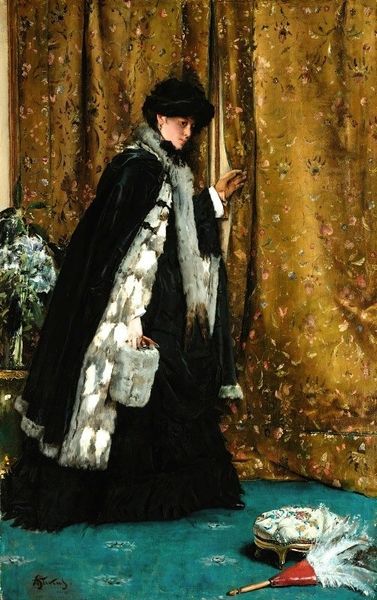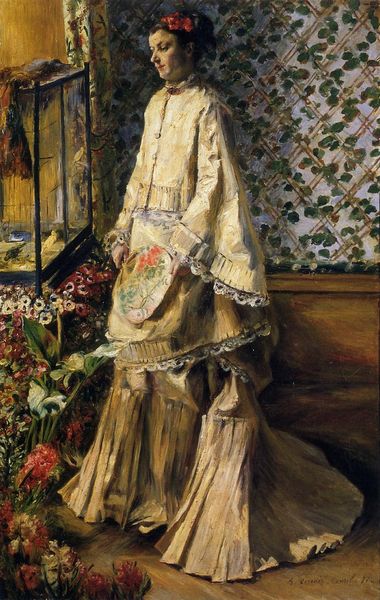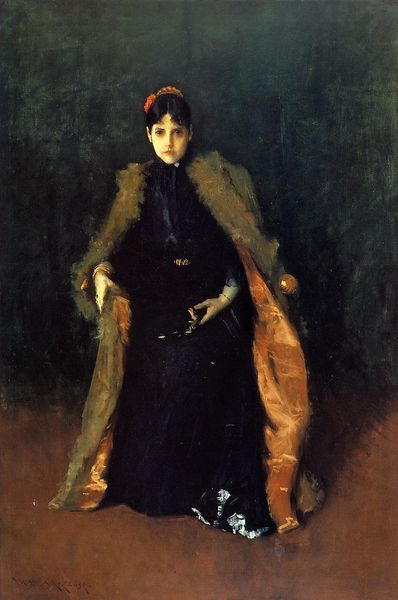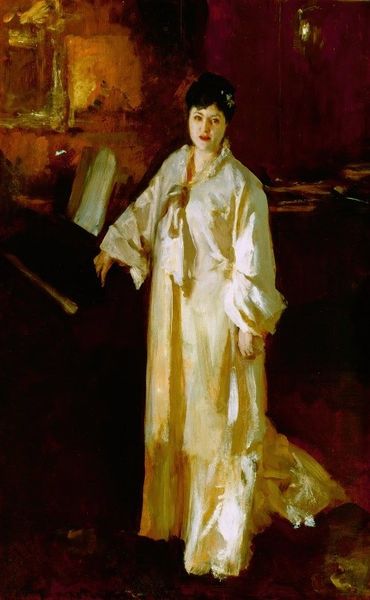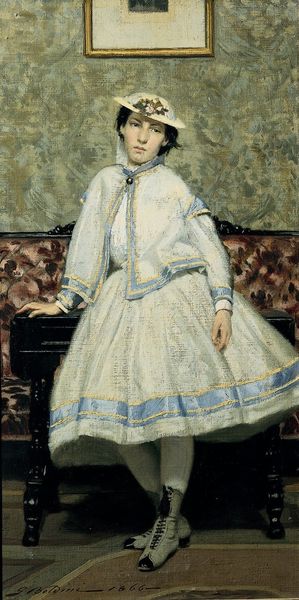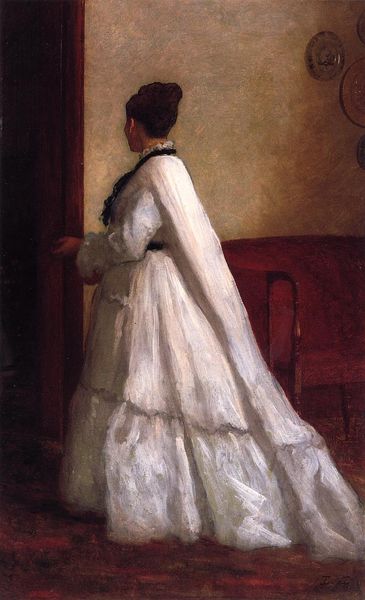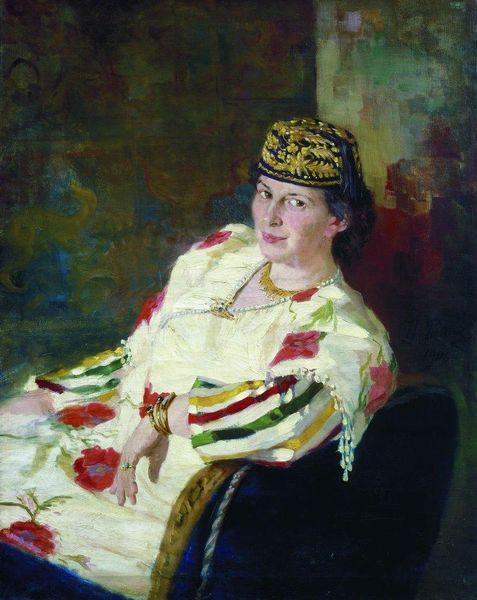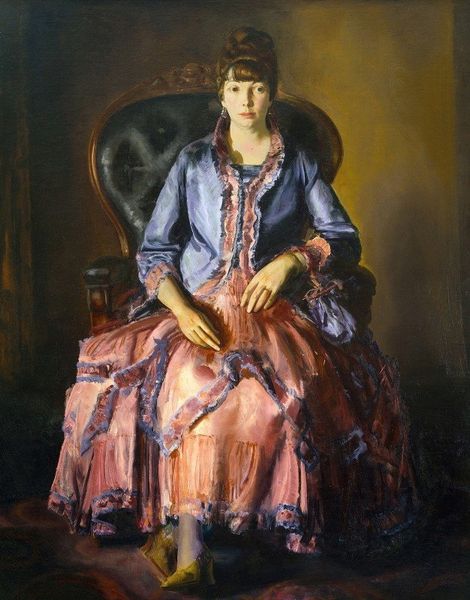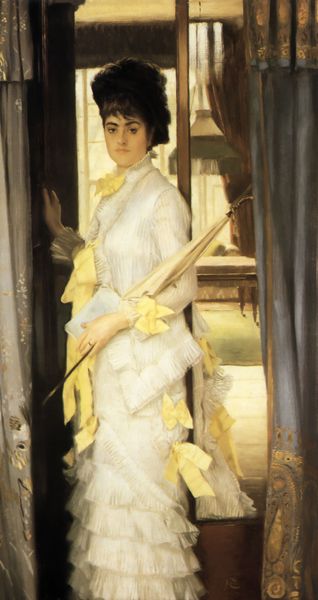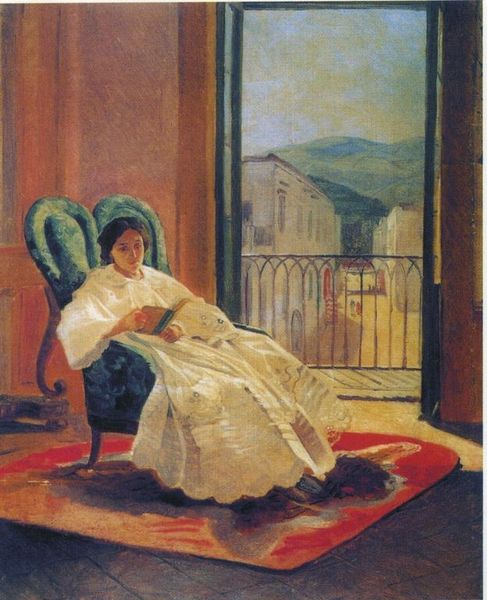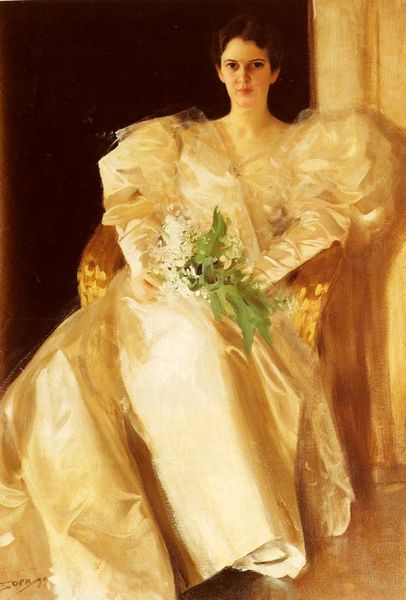
painting, oil-paint
#
portrait
#
painting
#
impressionism
#
oil-paint
#
portrait subject
#
oil painting
#
intimism
#
portrait drawing
#
genre-painting
#
facial portrait
#
portrait art
#
fine art portrait
Copyright: Public domain
Curator: Let's consider Degas’ “Portrait of Madame Edmondo Morbilli, born Therese De Gas," executed in 1869. This piece currently resides in a private collection, but I want us to focus on how it visualizes bourgeois domesticity through careful material construction and display. Editor: My first thought is: melancholy sunshine. That buttery yellow dress set against those shadowed red interiors creates a quietly powerful mood, doesn't it? She seems so still, almost caught in a fleeting moment. Curator: Precisely. Note the dress. Its confection signifies a certain status, acquired through very specific modes of garment production. Then consider the intimacy: a relative, captured in what feels like a spontaneous moment, yet deliberately staged. The labor involved, from the fabrics chosen to the brushstrokes applied, positions this portrait as a constructed performance of class and kinship. Editor: Yes, "performance" nails it. There's something almost theatrical in her pose, like she's playing the part of a contemplative lady. Her hand at her face like that suggests boredom. Also note the placement of the hat in her left hand which draws the eyes of the observer and perhaps hides her figure, making her unreadable to the world. It’s an excellent contrast between interior unease and social presentation. I also think it hints at the fleeting, ephemeral quality of life itself, not unlike what writers like Proust captured. Curator: The "fleeting" quality stems directly from Degas’ conscious adoption of impressionistic techniques, where the application of paint is as important as the subject. However, I'd add that the dress itself – the lace, the ribbon, the overall structure – demands a close reading regarding the economy and labour surrounding its existence. Each thread speaks to complex systems of production and consumption. Editor: That's so interesting – you see the economics, I see a story about being a woman, of performance but more accurately *constriction*. Both are totally present. What a marvelous picture this is for how its secrets are folded in so seamlessly into this otherwise straightforward impression of high society. Curator: Indeed, a seemingly intimate snapshot, which reveals the mechanics of 19th-century bourgeois life, and its representation through both visible, tactile material realities and coded presentation of oneself. Editor: Thank you, now I have a broader view of the themes. It does create so much to think about.
Comments
No comments
Be the first to comment and join the conversation on the ultimate creative platform.
